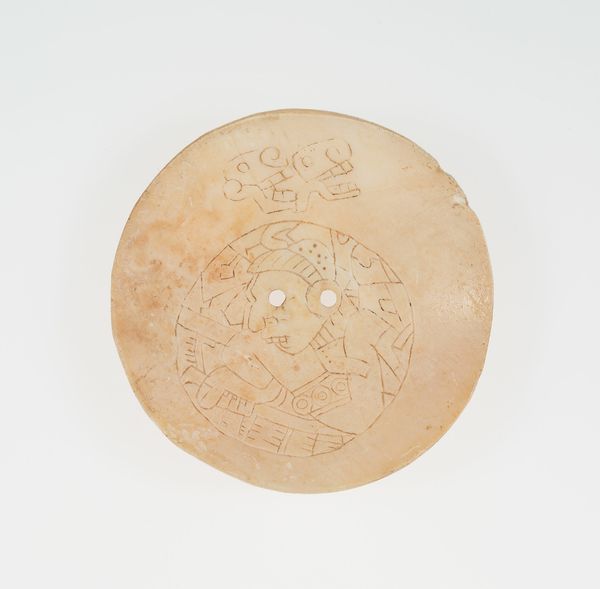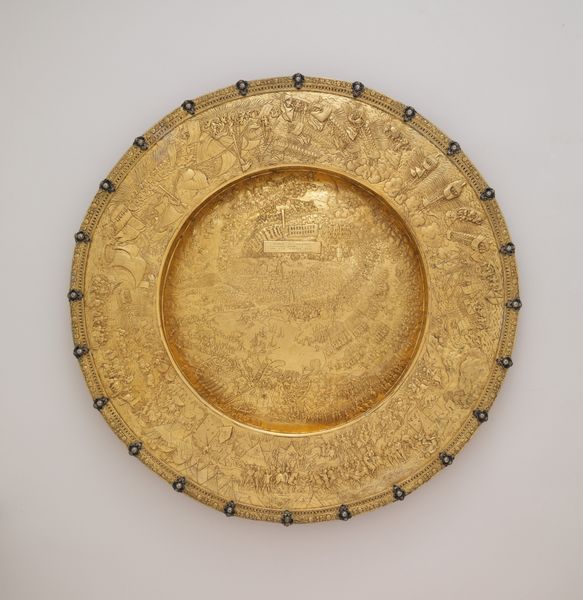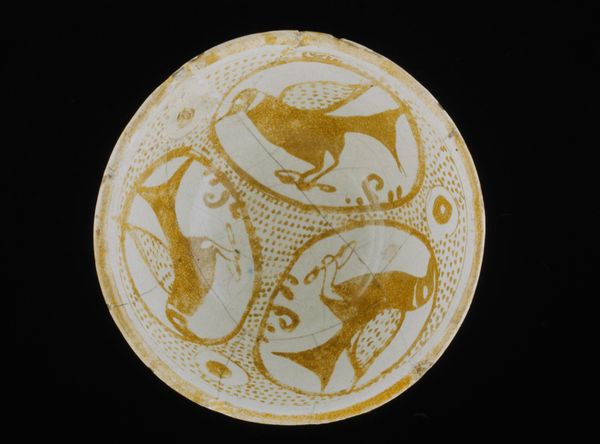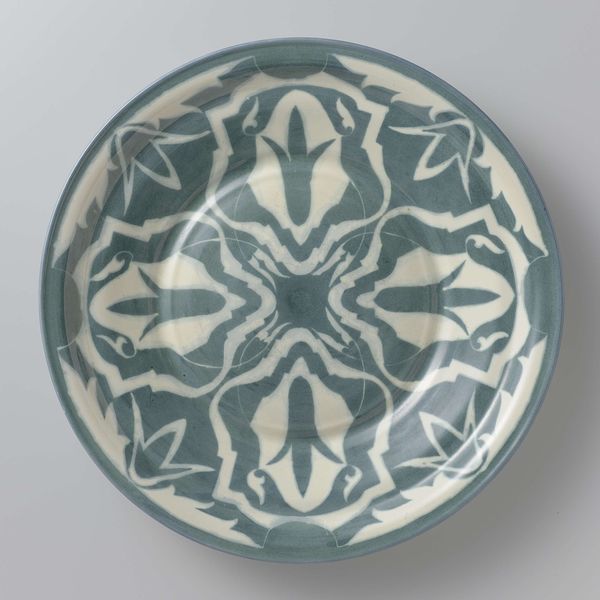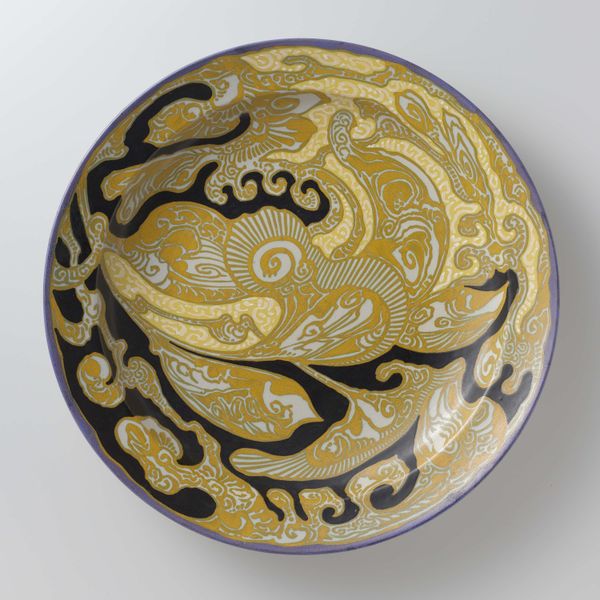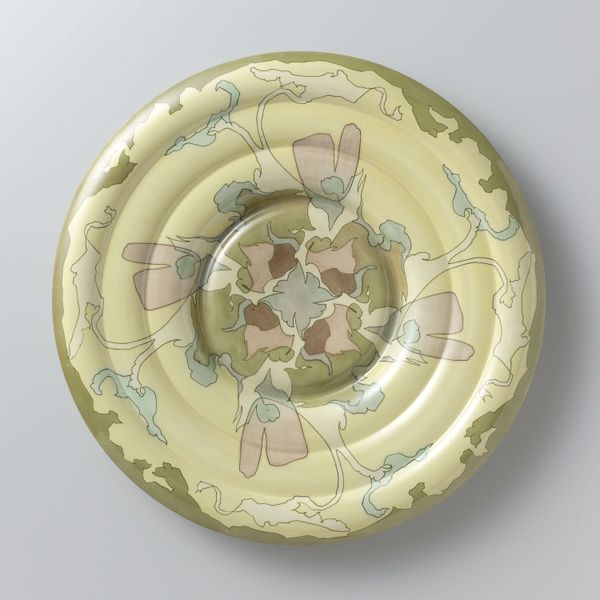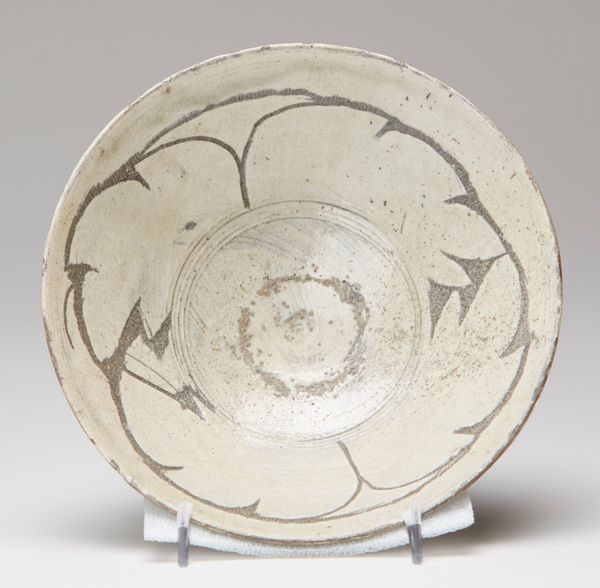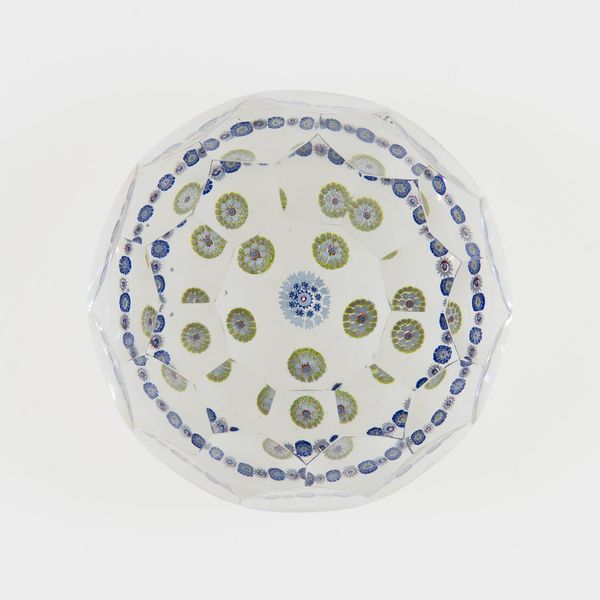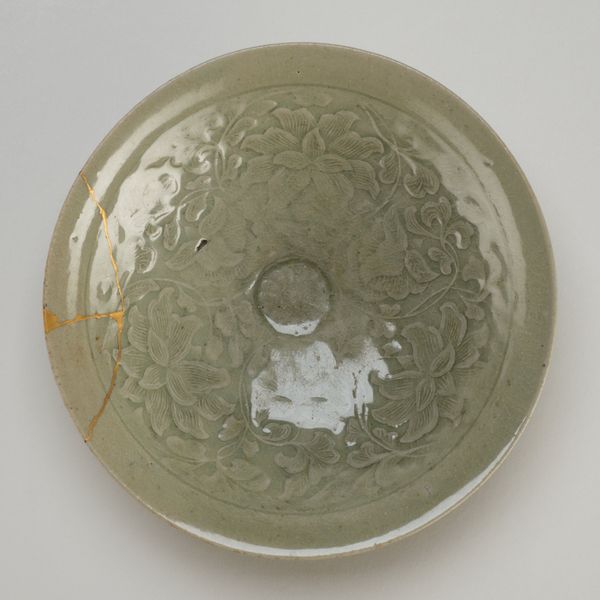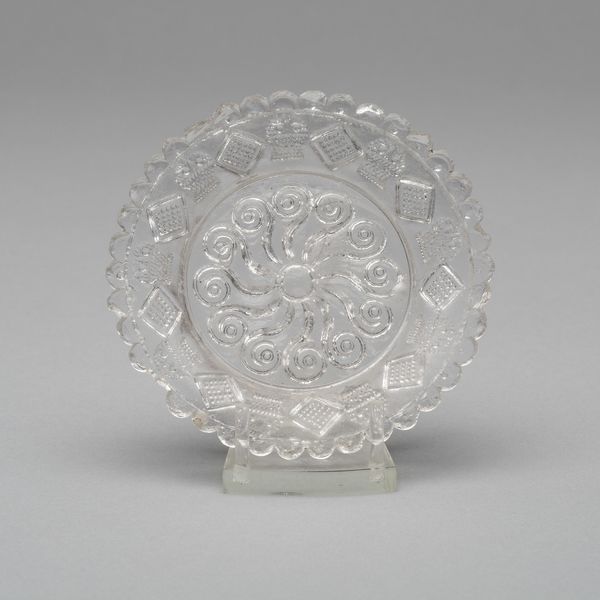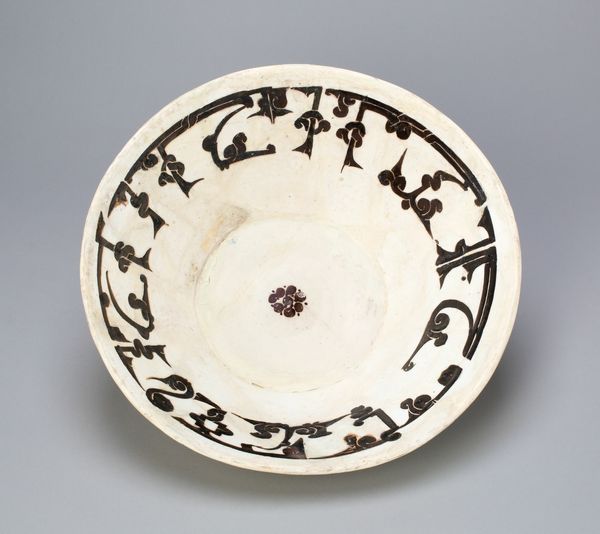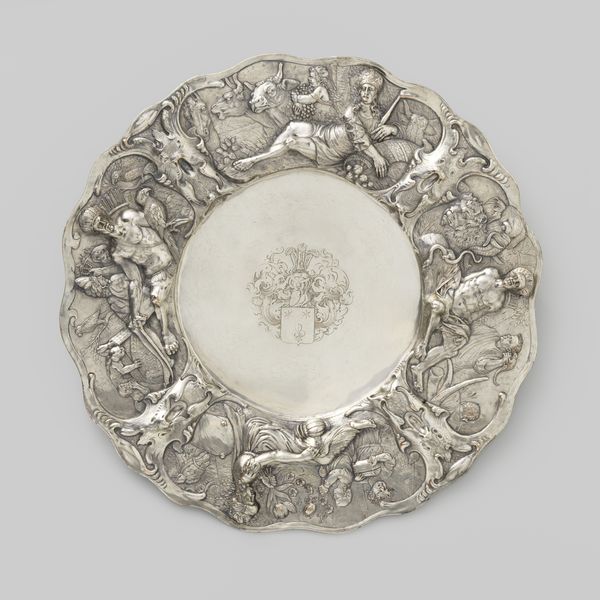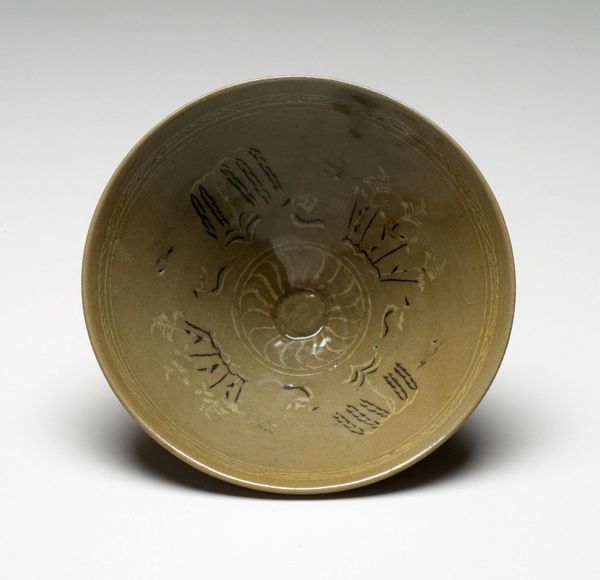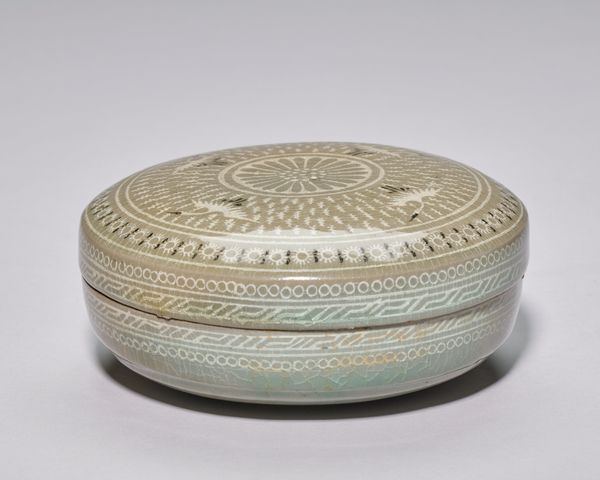
ceramic
#
ceramic
#
ceramic
#
islamic-art
#
decorative-art
Dimensions: H. 2 7/8 in. (7.3 cm) Diam. 10 in. (25.4 cm)
Copyright: Public Domain
This bowl, now in the Met's collection, was made around the turn of the first millennium by Muslim Ibn al-Dahhan. The earthenware body has been coated in a white slip, then painted with a design of an eagle in lusterware. The key to understanding this piece is to appreciate the complex firing process that created the luster effect. This required great expertise, and a well-controlled kiln atmosphere. The technique connected the Islamic world to earlier traditions of glassmaking, and it later made its way to Europe, transforming the Italian Renaissance. What’s fascinating about this bowl is how it speaks to the networks of craft production at the time. The person forming the bowl, the one applying the slip, the painter of the eagle, and the person in charge of the kiln firing – each of these individuals contributed specialized knowledge, which was all necessary to bring this object into being. So, next time you see lusterware, remember, you are not just seeing an artwork, but the result of labor, skill, and the social context of its production.
Comments
No comments
Be the first to comment and join the conversation on the ultimate creative platform.
